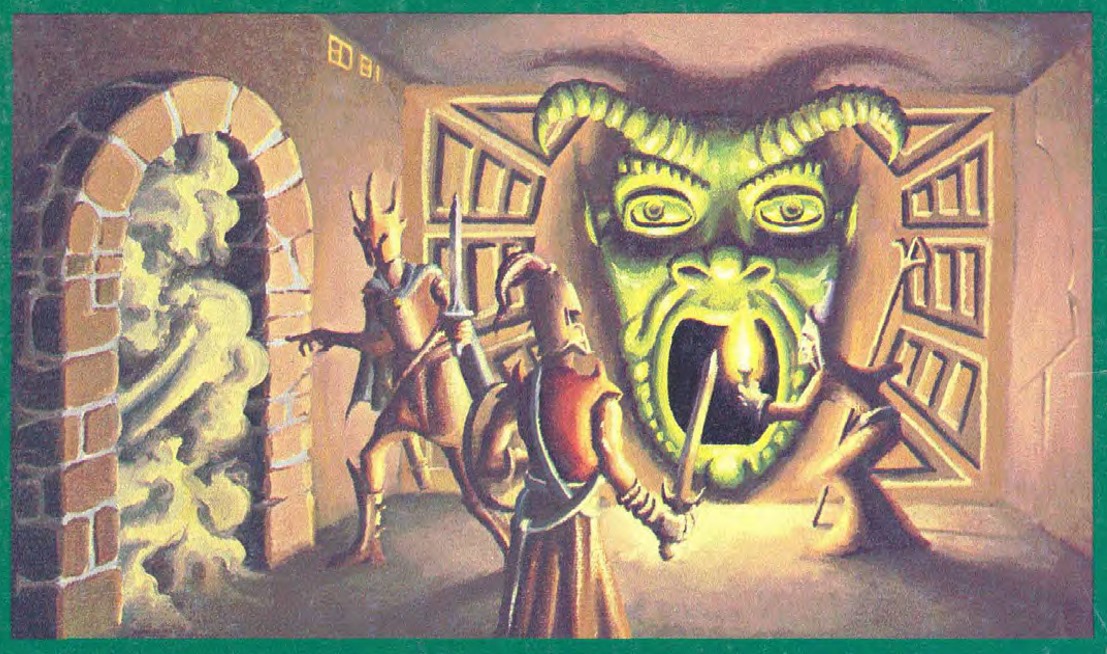

| - | - | - | - | - |
| Dragon 37 | - | Best of Dragon vol. II | - | Dragon |
***
Elric looked
at the pit. It was ragged and deep and the
earth in it seemed freshly turned as if it
had been but lately
dug.
“What must we wait for, Friend Corum?”
“For the Tower,” said Prince Corum. “I would
guess that
this is where it appears when it is in this
plane. ”
“And when will it appear?”
“At no particular time. We must wait. And
then, as soon as
we see it, we must rush it and attempt to
enter before it
vanishes again, moving on to the next plane.
”
—Michael Moorcock,
The Vanishing Tower.
***
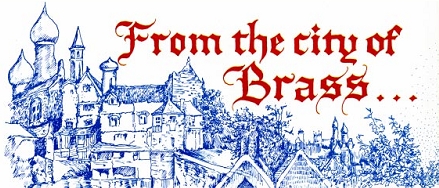
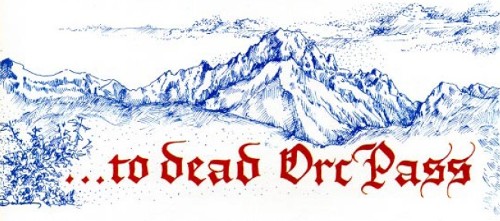
The plane-shifting Vanishing
Tower of Moorcock’s Eternal Champion
series is only one of the
many fascinating means of travelling
between worlds found in
SF and fantasy literature. These “gates” (as
they are most often called)
are ideal for use in AD&D campaigns,
serving as means of moving
between the various Known Planes of
Existence.
Besides providing a means
of taking players into new areas or
settings (often regardless
of their wishes), gates have the added advantage
of allowing the DM to introduce
NPCs not otherwise consistent
with his or her world, by
providing a plausible way of getting them there.
Thus, characters from other
D&D
campaigns or famed in fantastic
literature (such as those
detailed in the series Giants In The Earth in
The
Dragon), or even
the occasional modern-day GI or superhero comicbook
character (say, one of the
Marvel X-Men) can take their bows.
Such characters (used with
extreme moderation!) can provide both
comic relief and interesting
player tests. A Prince of Amber or Chaos
from Roger Zelazny’s Amber
series, for example, could hellride an
unwilling player character
to a new plane and leave him there with little
chance of returning, as
Corwin did to Ganelon. Handle the prince as a
high-level psionic and the
“hellride” as the discipline probability travel.
Gates also provide a means
of shifting characters into a new, prepared
setting when the DM is changing
campaigns— i.e. from D&D to
AD&D,
or when one campaign has gotten out of hand and a fresh start is
desired, without placing
long-played characters into limbo forever. To
cut down on artifacts, et
cetera, the DM merely has them fail to work in
the new plane (referring
to Zelazny again, consider that the only explosive
that worked in Amber was
not gunpowder, but jeweller’s rouge).
Gates can also be used to
combine the campaigns of various DMs,
either by direct gate link,
or by providing a “common ground”; an area,
like Michael Moorcock’s
Tanelorn, which exists in all planes. And “since
Tanelorn exists in all planes
at all times it is easier for a man who dwells
there to pass between the
planes, discover the particular one he
seeks.” 1
An obvious choice for such a city would be a commercial
module or playing aid, such
as Judges Guild’s City-State of the Invincible
Overlord.
Various game systems (D&D,
MA, GW, Traveller and Boot
Hill, to
name a few) could be combined
(refer to the DMG and Jim
Ward’s
article
in TD -18 for the details of meshing rules and statistics) by gates
linking one game setting
(i.e. The Old West) to another (Camelot—why
not? Well, I’ll wait until
the Knights of the Round Table—and
Merlin—
appear in Giants
In The Earth; hint, hint).
The idea could also be adapted
to Traveller or other SF games,
operating in the manner
of Larry Niven’s matter transmission booths or
James H. Schmitz’s subspace
portals.2 Gates have an advantage over
the Amulet of the Planes,
which can force the DM to create, in depth,
any one of 21 to 24 planes
at the roll of a die. The problems this or
similar means of transport
(such as cursed scrolls or ancient grimoires—
cf. Codex
of the Infinite Planes) can produce are obvious (for an
example, see the introduction
to Gary Gygax’s Faceless Men And
Clockwork
Monsters in TD -17). Foreknowledge (and preparation) of
the players’ destination
avoids frantic dice-rolling a step ahead of the
exploring party (“ahh .
. . you see—um . . . a range of mountains in
the distance, and—ahh .
. . a—a band of orcs twenty feet from you
there are—ahh, fifteen of
them”; frantic rolling of hit points, etc., rapid
onset of nervous breakdown
on the poor DM’s part, not to mention the
players’). A Cubic Gate
or Well of Many Worlds is much better, but
often the DM does not wish
the players to control such items.
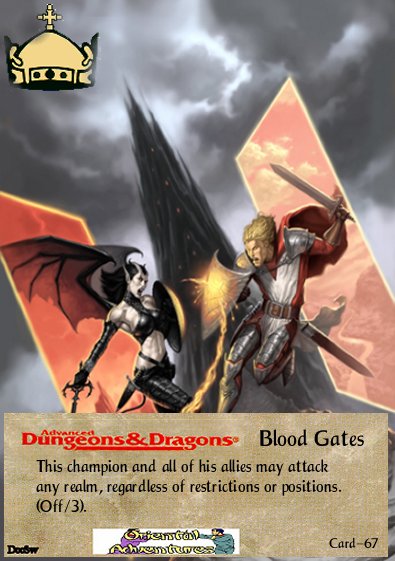
In its most common form,
the Gate is merely a space between two
standing stones. It may
be of three basic types: those which operate
constantly; those which
must be triggered by the use of a spell, talisman,
mechanical process, or word;
and those which operate periodically
(often in accordance with
stellar configurations, phases of the moon, or
solstices—such as Midsummer
Night—and equinoxes) regardless of
the presence or absence
of travellers. Typically, gates are both ancient
(locations and working almost
forgotten, or distorted by legend) and
well-nigh indestructible.
If they are destroyed, it is usually with an
explosion of awesome intensity.
Occasionally they are clearly the work
of superior (usually lost)
technology, and may have safeguards and
traps built into the controls.

DMs will find much of interest
and usefulness in fantasy and science
fiction works, and this
is as true for gates as it is for monsters or magic.
Some contain concepts ideal
for use by the DM. The Vanishing Tower is
perhaps the most spectacular
of these. It is a small stone castle, sections
of which appear shadowy
and vague. Lights play about its battlements.
It flickers from one plane
to another, spending only minutes or at the
most a few hours at any
location. There should be a warning flicker just
before it shifts (the DM
should count to ten, quickly, before shifting the
tower). The shift should
be more or less instantaneous and under the
directional control of no
person or entity (this will prevent players from
making it a cheap means
of all-powerful transportation, or worse, a
well-nigh unassailable fortress
which can shift away to escape danger in
any one plane). The only
exception to this lack of player control is the
provision (by means of a
Limited (or Full) Wish spell) for forcing the
tower away from the plane
of the spell caster. The spell caster should
have no knowledge of, nor
control over, its new destination when
driven away. The DM, however,
should know (and resist the temptation
to change) the tower’s destinations
and the occasions on which it shifts.
When using either the Tower
or the Ship (see below) a chart should be
drawn up showing the circuit
of planes travelled through. Dice can
determine the length of
time spent in each plane.
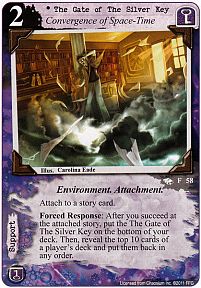
In Moorcock’s novels, the
“ordinary laws of sorcery”3 do not work
within the tower due to
the rapidity of its shifting and the varying
effectiveness of magic from
plane to plane, but individual DMs must
make their own decisions.
It is suggested that psionics and the following
spells not work within the
tower, or through its walls from inside or out:
Chariot of Sustarre, Contact
Other Plane, Control Weather (and similar
spells), Dimension Door,
Drawmij’s Instant Summons, Gate, Locate
Object, Passwall, Plane
Shift, Stone Tell, Teleport, Wizard Eye (and
related ‘spy’ spells), Word
of Recall. It is a matter of choice whether a
Magic-User within the tower
should be permitted to recall a Leomund’s
Tiny Chest.
The tower generally enters
any given plane in relatively the same
spot (see opening quotation)
each time. Note that this is by no means
certain, and the irregularity
of its presence (coupled with the length of
absence) will in most planes
deny precise knowledge (and perhaps
guarding) of its point of
entry. Often only old, distorted legends and
crumbling, forgotten records
will hint at where it may be found when it
does appear.

Often the tower will be inhabited
by creatures venturing into it from
the various planes it visits
(for example, if the Tower has visited any of
the Nine Hells at all recently,
it will certainly have been garrisoned; one
might assume the archdevils
have given standing orders regarding this).
Monster possibilities are
obvious.
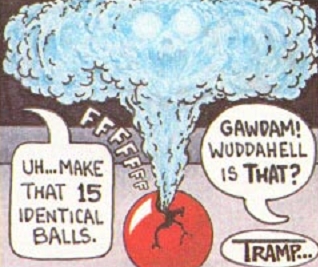
In the original, a dwarf
named Voilodon Ghagnasdiak inhabited the
tower (after discovering
its plane-shifting properties the hard way). Too
fearful to leave, but very
lonely, he captured those who entered the
tower and forced them to
be his companions until he grew tired of them
and killed them. He had
a number of winged, monstrous servants
(seemingly equivalent to
gargoyles) who could be harmed only by the
scythes they bore. Like
the monster in Wormy, TD -18 and 19, these
were initially imprisoned
within balls which the dwarf would throw at
those menacing him. In the
depths of the tower was a vault filled with the
treasure of all those who
had ventured into the tower and fallen prey to
Ghagnasdiak. Such a hoard
would include many strange artifacts
(perhaps Gamma World weapons
and armor) and much magical treasure.
In the original novel, one
such artifact was the Runestaff, which
apparently has the power
to halt the tower’s shifting (although it was
never so used). It can itself
shift its holder and anyone touching him or
her to any plane desired—whereupon
it will vanish.

The Ship That Sails
The Seas of Fate is also of Moorcock’s invention.
It is a ship of dark and
strange design, with a curving, warlike prow,
ornately carved rails and
figurehead, elevated decks fore and aft. With a
tireless crew of two, a
blind captain and his twin the steersman, it sails
through the planes on an
apparently foreordained route. As the captain
tells Elric, “We’ll sight
land shortly. If you would disembark and seek
your own world, I should
advise you do so now. This is the closest we
shall ever come again to
your plane.”4 Always shrouded in mist, the
Dark Ship seems to spend
much of its time in the astral plane, en route
from a sea in one plane
to another sea in the next, rather than shifting
instantaneously as the Tower
does.
The magnum opus of gate systems
is Philip Jose Farmer’s fivevolume
World of Tiers
series.5 Gates therein are of many types, most
commonly doorframes or hoops,
or matching crescents (which must be
joined to activate the gate)
or seemingly indestructible metal. Passage
through them is so instantaneous
that one may step through an open
doorway and be gated into
another room (identical to the one the door
physically opens into) without
realizing it. Air passes through the gates
automatically, to prevent
the ‘pop’ of air rushing into a sudden vacuum
as someone vanishes. Gate
fields can cut anything, and are used (at
various points in the series)
to neatly carve up huge rocks, trees, and
enemies of various sorts.

Gates may be portable, or
partly so (one crescent set into a floor or
boulder, often concealed,
and the other loose, usually hidden elsewhere).
Gates may be set to allow
passage of masses up to a certain
maximum; thus, men or large
animals can be kept out. Gates are usually
found in pairs (that is,
entry and exit, or vice versa) which share the same
“resonant frequency.” Such
a frequency may be changed by the use of
sophisticated machinery
to turn the gates off (perhaps cutting someone
in half!) or align them
with other gates, changing the destination any
given gate leads to. Gates
may be set for one-time operation, random
resonance changes, or activation
only by code words. They may also
“flipflop”; that is, automatically
change their resonance after being
activated, so that the next
time the gate is used it will lead somewhere
else.
Gates may also be traps (and
in Farmer’s books, usually are). They
may be set to kill those
trying to use them or entering them in the wrong
direction or manner,6
or lead to “inescapable” prison cells (see Mark S.
Day’s
article in TD -23 or Farmer’s novels), undesirable planes, or
to
almost certain death (i.e.
into midair, a mile from the ground). The hero
of the series, Kickaha the
Trickster (who’d make a great GITE—
Lawrence Schick and Tom
Moldvay please note!), escaped from one
such cell by crouching atop
an empty food platter and being gated to the
kitchen. (Gates are often—especially
in cells—used as dumbwaiters,
with a matching pair of
gates in the kitchen and set into the top of the
dining table.)

The usual way in which gates
kill is an electrical discharge powerful
enough to crisp flesh, but
Farmer also has one that shoots burning oil at
anyone standing in front
of it when it is first activated (thus, anyone in
the know would stand to
the side, toss a stone through the gate, and wait
for the fireworks to die
down).
Another underhanded trick,
ideal for
scattering parties, is a
second, delayed gate set off by passing through
the first (so as to catch
the third or fourth person in the marching order).
The most spectacular trap
is a circuit or series of gates, each activated
by the preceding one, so
that people entering any gate in the
circuit are trapped, blinking
in rapid succession from one location to
another. They are vulnerable
to attacks in the few seconds they are in
each location (usually by
missiles), and can leave the circuit only by
leaping out of a gate during
that very brief time. If they misjudge the
timing, they are bisected
or otherwise mangled as part of them is gated
on to the next location.
A base chance of leaping out successfully of
60% is suggested, plus 5%
for every point of Dexterity over 15, and
minus 5% for every point
under 12. For every 10 HP that the character
may have currently lost
(i.e. wounds), also subtract 5% from the chance
of success. If a character
is caught by the gate shift, he or she must save
vs. paralyzation or be cut
in half (instant death). If the save is made, the
gate is considered to have
severed a limb or something of the sort, and
such a wound will have to
be cauterized to prevent the character from
bleeding to death. The character
will take 2d12 damage and must save
vs. System Shock, or die.
If the trapped person has a friend at one of the
locations visited by the
circuit, the friend can stop the circuit by jamming
the empty gate so full of
matter that the maximum mass it can shift is
reached and it stops working,
shutting down the circuit. Of course, the
trapped person will be freed
elsewhere in the circuit, which may be
several planes away.

An artifact, The Horn of
Shambarinen, has the power of opening
gates between planes whenever
its seven notes are sounded in the
proper sequence at a resonant
point in any plane (the DM must determine
which plane the resonant
point is adjacent to, and thus where
the gate will lead). It
can also match the resonance of any existing gate
and operate it (without
the usual key, device, or missing crescent). Gates
glow if the Horn is played
close to them (say, within 60’) and the
horn-blower can see through
the gate into wherever it leads. The Horn
resembles a silver Horn
of Valhalla, with seven buttons set in a line along
its top, and the mouth of
the horn filled with a silvery web. It is
constructed of an unknown
and seemingly indestructible metal, and
bears the hieroglyph of
Shambarinen on its underside.

A more recent series of books,
C.J. Cheryh’s Morgaine trilogy,7
illustrates the attitude
of medieval-level cultures to gates in their midst.
An early and excellent use
of gates is found in C.S. Lewis’s Chronicles of
Narnia,8
which incorporates a fascinating campaign setting: The Wood
Between The Worlds. This
is an ancient woods into which almost all
gates open, and as a result
is peopled with many strange and wonderful
creatures. A tavern in such
a place would abound with fascinating and
powerful NPCs. And that
painting over the bar, if one stares at it for a
moment, can be stepped through,
into . . . Well, have fun.
Notes
1. Michael
Moorcock, The Vanishing Tower, p. 152 (DAW paperback).

2. See Schmitz’s
The
Lion Game— a DAW paperback—for a huge dungeon of
rooms connected by portals,
with many traps and ‘lost’ sections.
4. Michael
Moorcock, The Sailor On The Seas Of Fate, p. 58 (DAW
paperback).

5. The books,
available in Ace paperbacks, are (in chronological order): The
Maker Of Universes;
The
Gates of Creation; A Private Cosmos; Behind
The
Walls Of Terra;
and The Lavalite World. Essential references, all.
6. One such
‘killer gate’ was a doorframe revolving rapidly in midair. Identification
of the ‘safe side’ was of
course very difficult. Another might be a
doorframe, only the upper
half of which is a gate, so that anyone stepping
through the gate in a normal
manner (rather than leaping) will be cut in half as
only their upper body gates
away.
7. Gate of Ivrel; Well of Shiuan; Fires of Azeroth (DAW paperbacks).

8. In chronological
order: The Magician’s Nephew; The Lion, The Witch &
The
Wardrobe;
Prince
Caspian; The Voyage of the Dawn Treader;
The
Silver
Chair; The
Horse and His Boy; and The Last Battle, available
in Puffin
paperbacks in Canada and
Macmillan paperbacks in the States. The first five
bristle with material of
interest to D&D players. The Wood Between The
Worlds appears in Chapter
3 of The Magician’s Nephew.

Alan, either works with
me.
As another fan ot Farmer's
"Created UIniverses" series, I used gates generally, although Iggwilv
is capable of transpirting herself to various known locations without such
aid.
Cheers,
Gary
